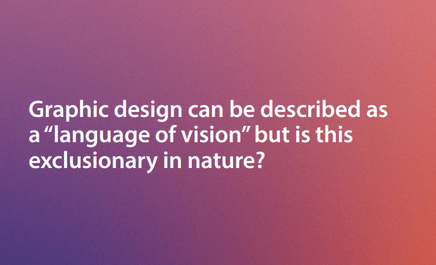Pictures, photos, infographics, icons – they all convey messages. It is often said that images say more than words. A bar graph gives a visual representation of statistics making it easier to understand. A photo of a landscape in a tourist brochure piques interest in a place. Readily recognised icons send instant messages, such as this is a train station or this is a toilet. But it needs to be accessible graphic design.
Graphic design is an essential element of all communication.

The way text is presented also sends messages. For example, a tiny faint font sends the message to people with low vision that they are not included. A busy page with tightly compressed text is readable but uncomfortable.
Images and text are essential elements in visual communication. The importance of accessible and inclusive communication is the subject of a masters thesis by Christine Woolley from Canada. The title is, Equitable access to public information and the role of the graphic designer.
When graphic designers consider accessibility and inclusivity in their work, the result is a better experience for all…

Woolley’s research explores how graphic designers learn about, interpret and implement accessibility standards into practice. She used participatory research methods, often referred to as co-design. The outcome is a framework and a set of recommendations for supporting the graphic design industry in Canada.
The thesis discusses many aspects of accessible and inclusive design, and it’s role in equitable access to public information. Woolley has three main pillars of discussion.
- Understanding the importance of access – the moral angle
- Understanding industry standards and guidelines – the responsibility angle
- Understanding accessibility legislation – the legal angle

The framework and recommendations were designed through a collaborative process with participants and represent a collective need for industry support.
Handbook for accessible graphic design
Download this free practical handbook for accessible graphic design from Canada. The text covers typography, digital media, web accessibility, Office documents, accessible PDFs, print design, environmental graphic design, colour selection and more. It’s relatively easy to read and has a logical structure. At the end is a list of publications, links to websites and tools to help.
